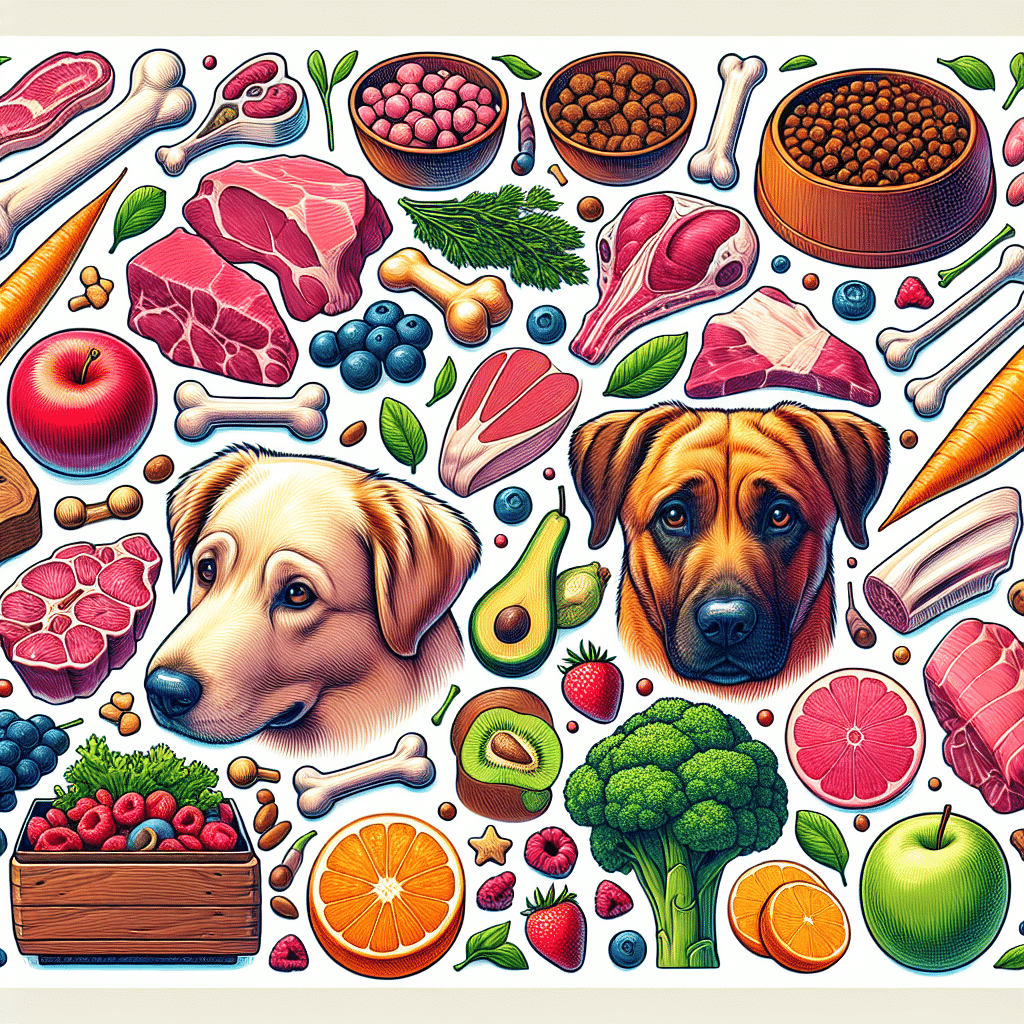What is a Raw Dog Food Diet?
A raw dog food diet, often referred to as “BARF” (Biologically Appropriate Raw Food or Bones and Raw Food), consists mainly of uncooked meat, bones, fruits, and vegetables, closely mimicking what dogs would eat in the wild. Proponents of this diet argue that it is more natural, nutritious, and beneficial for a dog’s health compared to traditional commercial dog foods.
Benefits of a Raw Dog Food Diet
Improved Digestion
Raw diets enable dogs to digest food better. Uncooked meat and bones contain enzymes that aid digestion, while cooked foods often lack these crucial components. Many dog owners report firmer stool and less odor when switching to raw food.
Healthier Skin and Coat
A raw diet can lead to improvements in skin and coat health. Essential fatty acids like Omega-3 and Omega-6 found in raw meat contribute to a shiny, healthy coat, reducing shedding and issues like dandruff.
Increased Energy Levels
A diet rich in whole foods offers a more balanced nutrient profile. Many pet owners note enhanced vitality and energy levels in their dogs after switching to raw diets, perhaps due to improved nutrient absorption.
Dental Health
Raw, meaty bones can help clean teeth and gums, reducing plaque and tartar buildup. Chewing on bones encourages a natural dental hygiene regimen for dogs, leading to better overall oral health.
Common Myths About Raw Dog Food Diets
Myth 1: Raw Diets are Unsafe
One common misconception is that raw diets carry a higher risk of foodborne illnesses. While it’s essential to handle raw meat safely, many raw feeders successfully minimize risks through proper food handling, sourcing from reputable suppliers, and maintaining cleanliness.
Myth 2: Dogs Will Starve on Raw Food
Some argue that raw diets lack adequate nutrition. However, with careful planning, raw diets can provide all necessary nutrients. Consulting with a veterinarian or pet nutritionist can ensure balanced meal preparations.
Myth 3: All Raw Foods are Created Equal
Not all raw foods or mixes are suitable for dogs. Owners should seek out high-quality proteins and healthy additives, avoiding low-quality meats or fillers.
Getting Started with Raw Feeding
Consultation with a Veterinarian
Before transitioning your dog to a raw food diet, consult your veterinarian. They can help tailor a plan specific to your dog’s individual health needs and address any concerns regarding nutritional balance or medical issues.
Types of Raw Foods to Consider
-
Meat: Choose high-quality sources like chicken, beef, lamb, and fish. Rotating proteins can help provide balanced nutrition.
-
Bones: Raw chicken necks, wings, or beef bones are excellent options for dental health. Ensure bones are raw, never cooked, as cooked bones can splinter.
-
Organs: Offal like liver, heart, or kidney is nutrient-dense. Feed these in moderation, as they are potent sources of vitamins.
-
Fruits and Vegetables: Adding fresh produce like carrots, apples, or leafy greens can provide essential vitamins and minerals. Always remove seeds and cores from fruits.
Portion Control
Feeding guidelines vary based on the dog’s size, age, and activity level. A general rule is to feed about 2-3% of the dog’s body weight daily, adjusting as necessary based on their condition.
Transitioning to a Raw Dog Food Diet
A Gradual Approach
Transitioning your dog should be done gradually over 7-10 days. Start by mixing raw food with your dog’s current kibble, progressively increasing the raw portions while decreasing the kibble. Monitor your dog’s response, looking for signs of digestive upset or discomfort.
Monitoring Your Dog’s Response
Pay close attention to how your dog reacts to the new diet. Look for changes in energy levels, stool quality, and general behavior. Any signs of discomfort or negative reactions should be addressed promptly with a vet.
Nutritional Considerations
Balancing Nutrients
Maintain a balanced diet by including a variety of protein sources, vegetables, and organ meats. Supplements like fish oil, probiotics, or green-lipped mussel powder can enhance nutrition.
Essential Nutrients for Dogs
- Protein: Essential for muscle maintenance and overall health.
- Fat: Provides energy and assists in nutrient absorption.
- Vitamins and Minerals: Required for a myriad of bodily functions, including bone health and immune response.
Common Mistakes to Avoid
Over-reliance on One Source
Diversify the protein sources and types of food you provide to avoid nutritional deficiencies.
Ignoring Portion Control
Feeding too much or too little can lead to weight fluctuations or nutrient imbalances.
Underestimating Bone Risks
Always ensure that bones are raw to prevent splintering and choking hazards. Supervise your dog during feeding, especially with larger bones.
Tips for Raw Feeding Success
Preparing Meals Ahead of Time
Batch-cooking and portioning raw meals can simplify the feeding process. Store them in airtight containers or bags in the freezer for convenience.
Educating Yourself Continually
Stay informed about nutrition and raw feeding through books, online resources, and forums. Engage with experienced raw feeding communities online for shared tips and experiences.
Keeping a Regular Schedule
Establishing a consistent feeding routine helps in better digestibility and behavior stabilization. Aim for meals at the same times each day to create structure.
Resources for Further Learning
Online Forums and Groups
Engage in online communities dedicated to raw feeding where you can share answers, tips, and experiences. Popular platforms include Facebook groups and dedicated pet forums.
Books on Raw Feeding
Consider reading trusted books on raw dog nutrition, such as “Raw Dog Food: Make It Easy for You and Your Dog” by Carina Beth MacDonald or “Dinner PAWsible: 50 Easy Recipes for Your Dog” by Susanne B. Kahn.
Veterinary Nutritionists
Seek out veterinary nutritionists who specialize in raw diets for personalized advice, especially if your dog has specific health concerns needing tailored diets.
By familiarizing yourself with these aspects of a raw dog food diet, you can provide your dog with a nutrition plan that mirrors natural dietary habits, potentially leading to a healthier, happier pet.
